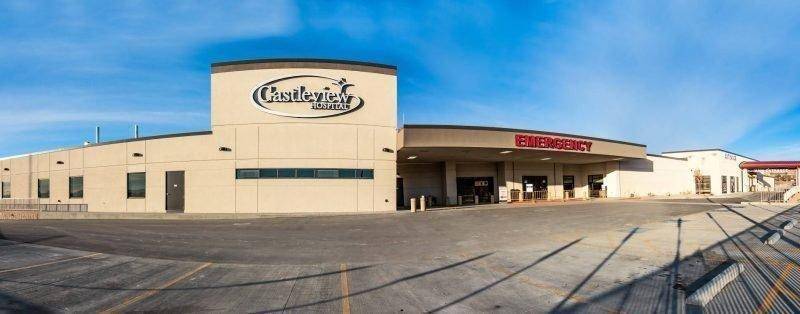By Mark Holyoak
CEO, Castleview Hospital
Recently, Becker’s Hospital Review, one of the leading healthcare trade publications, released the list of 2017 Top 100 Rural and Community Hospitals in the U.S. This list measures hospitals’ ability to successfully manage risk, achieve higher quality, secure better outcomes, increase patient satisfaction and operate at a lower cost than peer facilities.
This year, Castleview Hospital– your community hospital – is on the list. This is a tremendous testament to the hard work, dedication and tireless commitment of our hospital employees, our volunteers and medical staff. They go above and beyond every day to make sure that our community members – each of you – are met with the highest quality, most compassionate care possible.
What you may not realize is that over the course of the past couple of years, our hospital has been implementing new protocols and safety mechanisms intended to increase patient safety and improve the overall patient experience. For example, we have:
- Implemented bedside shift reporting, which is intended to improve communication among care teams and better engage the patient in the care process.
- Introduced the use of safety boards, which offer employees and medical staff a simple strategy to make any potential threats to safety, as well as steps being taken to resolve the threat, visible to the entire care team.
- Engaged in executive patient safety rounding, which involves frequent rounding by the hospital leadership team to ensure that staff concerns specific to safety are heard while also building trust and rapport.
- Received Stroke Center Certification, which includes assuring that processes are in place for rapid diagnosis and treatment of patient suffering from a stroke.
- Chest Pain Receiving Center Certification, which includes working with the community EMS providers, our ED staff and even receiving facilities when transfer is necessary for ongoing cardiac care to assure the best possible outcomes for our patients.
- Increased infection prevention measures, which involves increased education to nursing, housekeeping, dietary and the entire staff on ways they can help prevent the transfer of infection causing bacteria in the hospital.
But the best news is that our quality journey is far from finished. These initiatives and programs are only in their infancy. In the weeks, months and years to come, we will continue to evaluate our progress and look for ways to even further enhance the level of safety and quality care being delivered to every single person who sets foot inside our hospital.
And the reason we do this is simple. You.
You see, at Castleview Hospital, the word “quality” is more than just another buzzword or phrase. It is our way of life, encompassing everything we do: how we care for patients, how we ensure the health and safety of each of our employees, and how we contribute to the overall health and well-being of our communities.
Quality also means that every person at our hospital – our physicians, our employees in every department, our volunteers, and our patients and their family members – plays an important role in the delivery of quality care. We constantly strive to improve how we provide care and enhance our patients’ experiences, and we work hard to maintain a culture that empowers everyone to feel ownership over the care and service we provide.
To say that I am proud of this recognition is an understatement. But I am even more proud of the outstanding team of men and women who have so readily embraced our approach to quality and continuously give so much time and energy to the communities we serve. It is because of their commitment and hard work that our hospital has earned this recognition. And it is because of you that we do what we do.
On behalf of Castleview Hospital, thank you for continuing to entrust us with your healthcare needs.
Note: The list of Top 100 Rural Hospitals is generated by data compiled through the annual Rural Relevance Study – a project now in its sixth year that is led by The National Rural Health Association’s Rural Health Policy Institute, iVantage Health Analytics and The Chartis Center for Rural Health.

